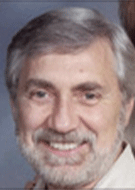RSNA/AAPM Symposium
Together We Can Make a Difference: Radiology/Physics Collaboration in the Development of New Imaging Techniques

The development of new imaging methods is almost always inspired by clinical need, enabled by advances in technology, and disseminated through partnerships with industry. The interdisciplinary collaborations between medical physicists who leverage these technical advances to solve clinical problems identified by practicing radiologists are critical factors in the success of our field. Likewise, translation of these new methods into clinical practice requires partnerships beyond the walls of academia.
In their lecture, Thomas M. Grist, MD and Charles A. Mistretta, PhD, will discuss a series of X-ray, MRI and CT techniques for diagnostic and interventional angiographic applications and the individuals and events that contributed to their development.
An esteemed researcher with a deep interest in safer diagnostic angiographic interventions, Charles A. Mistretta, PhD, is considered one of the primary architects of modern time-resolved angiography.
Dr. Mistretta is the John R. Cameron Professor in the Departments of Medical Physics, Radiology, and Biomedical Engineering at the University of Wisconsin, Madison. He received his PhD from Harvard University in Cambridge, MA.
His research began with the development of digital subtraction angiography, which was then extended to MR angiography. He is now working on methods to reduce radiation dose in CT fluoroscopy by a factor of 500 and CTA methods to determine coronary artery velocity and pressure. His research has resulted in more than 55 patents in the U.S. and globally. He has also been awarded multiple NIH grants, including several RO1 grants.
Dr. Mistretta received the 2010 RSNA Outstanding Researcher award, the Edith Quimby Award for Lifetime Achievement from the AAPM, the Marie Curie Skłodowska Award from the International Organization for Medical Physics, and the J. Allyn Taylor International Prize in Medicine from Robarts Research Institute. He also was awarded the Medal of Innovations in Healthcare Technology from the Institute of Electrical and Electronic Engineers.